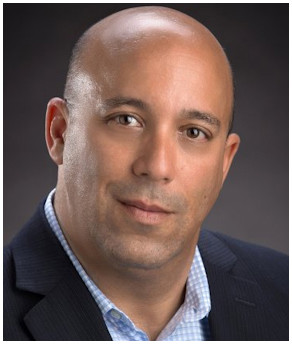Cleveland Medical Malpractice Attorneys Fight for Clients Injured by Concurrent Surgeries
Hire our skilled surgical and hospital mistake attorneys to protect your legal rights
At The Eisen Law Firm, our Cleveland medical malpractice attorneys are experienced in representing patients injured due to the scheduling of concurrent surgeries. This involves scheduling significant portions of at least two surgeries – using the same surgeon — during the same time frame.
Concurrent surgeries are potentially dangerous to patients
Although there are arguments in favor of scheduling concurrent surgeries and procedures, a number of patient safety issues are involved. These include:
- The inexperience of junior surgeons left to complete certain portions of a surgery without adequate supervision
- Some operations are too complex, risky, or specialized to delegate to junior surgeons
- The supervising surgeon’s inability to get to a patient in time if an unexpected scenario or complicated issue arises during surgery
Due to these substantial risks, many patient safety advocates argue that the practice of conducting concurrent surgeries should be banned altogether. The benefits of concurrent surgery are largely derived by the surgeons and the hospitals (more cases, more money), but the risks are largely borne by unsuspecting patients.
Consent is a major concern with concurrent surgery practices
Alarmingly, most patients enter an operating room without knowing that their trusted surgeon may not even be present for the entire procedure. Medical records often do not reflect a surgeon’s entry or exit into an operating room—in fact, in Ohio, entry and exit is typically documented for surgical assistants and nurses—but not for surgeons! That’s right: when you look at your medical records, you can tell precisely when the nurse who hands instruments to the surgeon leaves the room and is replaced by someone else, but you can’t figure out when your surgeon left the room. And make no mistake: that is quite intentional on the part of hospitals. They simply do not want you to know this potentially critical information.
In the medical community, informed consent is required for surgery. The patient signs a form that outlines the risks of the surgery. When something goes wrong in surgery, the surgeon or the hospital may use this document to show that they warned the patient such an outcome might occur. However, most consent forms do not outline the details of how a procedure will be conducted, and many patients may never find out if their surgeon left the operating room at some point during the operation. Although consent forms sometimes mention that residents will be involved in the procedure, they never advise the patient that the supervising physician literally might walk out the door while the patient is still under the knife, leaving the operation to a trainee.
To address this issue, there has been a push by patient safety advocates (not by hospitals) to provide additional information to patients prior to their procedures. Patients have the right to know if their surgeon might not be present during certain parts of a procedure, especially if the plan is to have the surgeon leave in order to start another surgery, in another room, on another patient. By informing patients of this fact ahead of time, the patient can decide if they want to proceed with a “concurrent” surgery.
It is also important to give the patient this information in a timely manner, so that the patient has a reasonable opportunity to process the information, make an informed decision, and — if necessary — to find another surgeon. Many patients become attached to the idea of using a particular surgeon for a procedure, and to find out on the day of surgery that the surgeon may not be present during the entire surgery is stressful and frustrating for many patients.
Finally, patients should understand why a medical facility schedules concurrent surgeries. They should be given the opportunity to ask whether these terms are negotiable. Many teaching hospitals will not negotiate these terms at their “main campus” or “flagship” hospital, but those same hospitals sometimes have satellite facilities, where senior physicians operate without any trainees and thus adhere to the idea of “One Surgeon, One Surgery.” These are things that should be discussed with patients up front, not as the patient is being wheeled into the operating room.
Additional monitoring of surgical practices may prevent harm caused by concurrent surgeries
Although there are no uniform rules governing concurrent surgery practices in the medical field, there are certain steps that medical facilities should take to encourage transparency.
First, every surgical facility should have a written policy on concurrent surgeries that defines the critical portions of various procedures, and how the facility ensures supervising surgeons are immediately available to handle any emergencies that arise.
Second, every surgical facility should ensure that its physicians specifically discuss with patients their concurrent surgery policy, so that there are no surprises.
Third, hospital records should reflect each time a surgeon enters or leaves an operating room. Additional details, such as which surgeons performed which portions of a surgery, should also be included. Such recordkeeping would enable hospitals to monitor compliance with their policies, and could help defend against, or, in some cases, corroborate, claims of medical negligence, particularly those that allege concurrent surgery practices led to negligent acts or omissions.
Contact our Cleveland surgical and hospital mistakes attorneys today to discuss your case
If you think you or a loved one may have been injured due to the scheduling of concurrent surgeries, contact us as soon as possible to ensure your legal rights are protected. The Ohio medical malpractice attorneys at The Eisen Law Firm offer a free initial consultation and case review. Call our office at 216-687-0900 or contact us online today to set up your free consultation.




